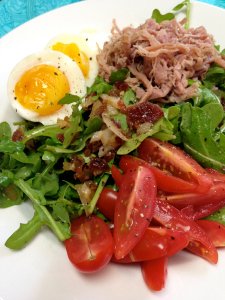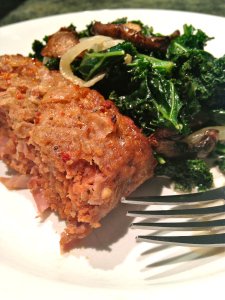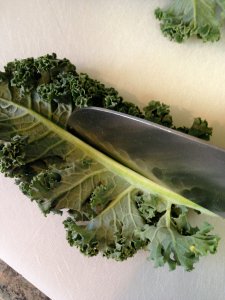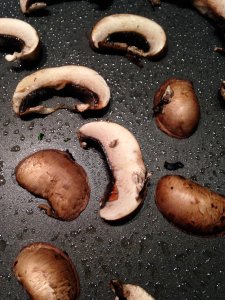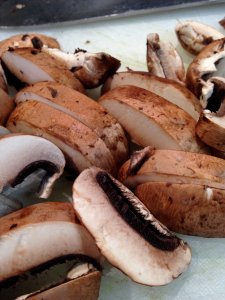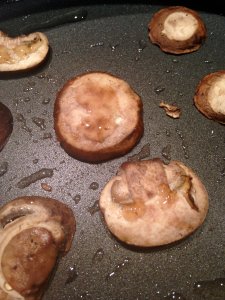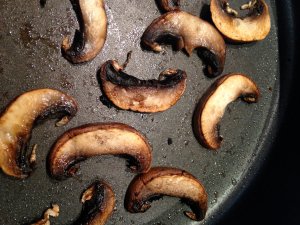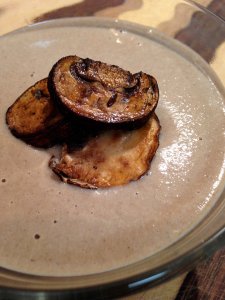
Home-brewed kombucha. Part mystery, part tasty, part science.
Grumpy Kevin and I fell down the fermentation rabbit hole after our first batch of sauerkraut. Then came fermented beets, ginger, pickles, eggs, vinegar, and kimchi. And now we’ve arrived at Kombucha, or fermented sweet tea. On further contemplation it seems pretty logical to ferment sweet tea in the South. After all, have you seen some of the weird things we eat??
Now there’s a lot of hype, myth, and confusion about Kombucha. Some say it’s from Russia, others from China. There are claims that it will ‘cure what ails ya’ and others claim it can kill you. Generally when such extremes are shouted from the mountaintops, I do a little investigating prior to jumping in headlong. So, I scoured the interwebs, reviewed several books on fermentation (previously read), checked out any evidence in medical journals (none), talked to buddies that were already brewing it, and reviewed a write-up by the CDC. What I determined for myself is pretty much what I learned in my Anthropological studies-cultures have been doing these things ‘for-evah’ in conditions much less clean than most kitchens and yet the folks are still alive. Now, one tool in their arsenal that we generally don’t have is a massive cultural legacy handed down from one generation to another on how to do this. What does that mean? Proceed with caution, common sense, and moderation.
**Note: Kombucha is brewed in the presence of a SCOBY (Symbiotic Culture of Bacteria and Yeast). You can get these from friends (make sure you know their brewing practices) or order online from a reputable seller. These are live bacteria and yeast that must be cared for properly (no chemicals, no metal, etc.). For your safety and own knowledge I highly suggest doing some reading before you go down the Kombucha Road-no site contains all of the info in one place.**
Basic Kombucha Recipe
- 1 SCOBY plus 2 cups of starter tea (or use unpasteurized, non-flavored store-bought kombucha)
- 1 gallon filtered water
- 1 cup white sugar (necessary; will be used up in fermentation)
- 8 bags black tea (or 2 tablespoons loose tea)
- Choice of fruit or other flavorings for a second fermentation
- Large stockpot
- 4-6 quart jars with lids
- Butter muslin, tea towels, or other breathable cloth
- Twine or large rubber band
Obtain a SCOBY. Ask your more ‘crunchy’ friends if they brew kombucha and ask if they have a SCOBY to spare. I got mine from my buddy, Jeff, after a conversation about the wonderful weirdness of fermenting.
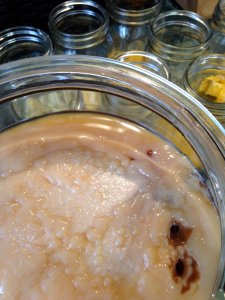
If you didn’t know better, you’d think SCOBYs were something out of a 1940s horror flick-not something you are actually trying to cultivate!
Make your tea. Make sure to use quality tea without pesticides or chemicals and no flavorings (think Earl Grey)-your SCOBY is a living thing and these will harm it. In a non-reactive stockpot, boil your water. Remove from heat and stir in the sugar until dissolved. Steep the tea for 15 minutes. Let the water cool completely (too warm of a temperature and you’ll end up killing your SCOBY). Remove the bags when cooled, or strain the loose tea. When completely cool, stir in the starter tea or store-bought kombucha. Cover with cloth (I use butter muslin) and secure cloth tightly with twine or a rubber band.
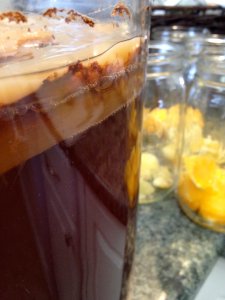
Kombucha in its element. An ‘adult’ or ‘mother’ kombucha SCOBY and baby SCOBY forming on top.
Wait. Let the weird, gelatinous, SCOBY-blob do its thing in a room temperature spot out of direct sunlight for 5 to 30 days. Yes, that’s quite a spread. Start tasting at 5 days (clean equipment only) and stop when the flavor seems right to you. Grumpy Kevin and I are quite a fan of tart, so we ferment for 21 days at a temperature of about 70ish. The result is definitely tart-like an apple cider vinegar. We then send it though a second ferment with fruit or other flavorings for 5 to 7 days. During your ferments, use common sense and watch for things like green or black mold (the acidic environment should prevent this). This is where your reading comes in since great granny isn’t giving out advice on kombucha brewing (at least not in the South).
Have some fun. Second Ferment…or ‘wait again’. Now you can have some fun with the flavor of your Kombucha. Use ginger, lemon, orange, berries, other flavored teas, or herbs for a “second ferment”. Gently remove your SCOBY (clean, vinegar-rinsed hands) and place it in a clean, vinegar-rinsed glass container. Don’t forget to save 2 cups of starter tea for your next batch. Place a bit of fruit (no science here-maybe a half of a cup) in the bottom of your clean quart jars and fill them with kombucha, leaving an inch or so at the top. Place your lids and set them out of direct sunlight on the counter. Wait 1-5 days for the carbonation to increase and flavors to develop, releasing the building CO2 daily. After the taste is to your liking, strain the kombucha into quart jars, place lids, and put in the fridge. They will last several weeks.
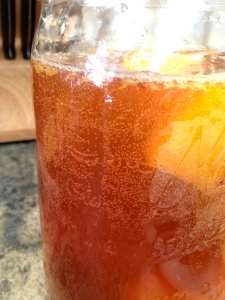
Carbonation from a second ferment.
Start up your next batch. Follow the instructions again from the beginning to keep yourself stocked in kombucha. Otherwise keep the scoby and starter tea in a sealed glass container in the fridge until ready. We continuously brew kombucha, so I’ve not had to ‘put the SCOBY to rest’ yet. There are plenty of sites with info for doing this though. If you’re super brave, you can try doing a second fermentation with sugars/fruit and/or other yeasts to purposefully increase the carbonation and alcohol content of your kombucha. I have not done this…but it sounds like a good experiment (i.e. watch for that at a later date!).


